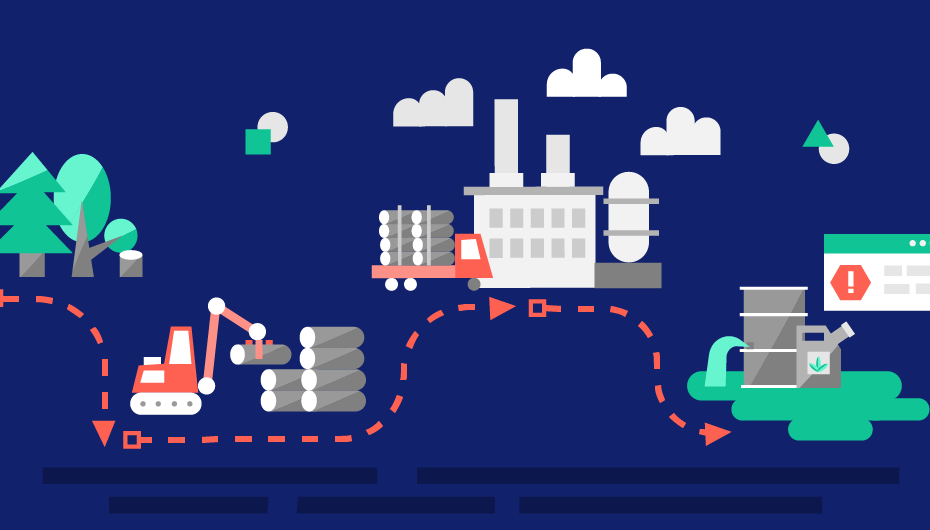This is the story of big dreams confronting operational realities. Even with hindsight, it’s impossible to know whether realistic projections on volume and price would have helped KiOR survive. What is clear is that the mistruths on yield rates ended up sinking the company. Learn about the failings of KiOR to help you steer away from avoidable trouble for your hardware venture.
Biofuel Turned Bio-fail
The future looked bright for KiOR, a small biofuel startup with big clean-energy dreams. The company was a joint venture between Khosla Ventures – of the legendary venture capitalist Vinod Khosla – and a Dutch startup called BIOeCON. As cited in Fortune, Khosla had boldly declared “a war on oil”, with KiOR as his weapon. He was able to attract a star-studded cast of supporters and investors to his cause: former Secretary of State Condoleezza Rice joined KiOR’s board, Bill Gates invested millions to help grow the company, and former U.K. Prime Minister Tony Blair served as senior advisor in 2010.
With technology that converts biomass (think: materials like grass or wood) into a bio-oil product that can be upgraded to fuel for transportation, KiOR seemed like the embodiment of a clean-energy future. Khosla’s grand vision was to gradually replace the majority of the world’s gasoline needs using this cleaner biomass technology. According to CB Insights, KiOR had an IPO valuation of almost $1.5 billion in 2011. Yet, three years later, the company filed for bankruptcy. How could such a well-intentioned business turn out so wrong? And more importantly, how can you avoid the same fate?
An Overly-Ambitious Vision
Initially, the plan was for KiOR’s technology to be licensed to large oil companies. These types of organizations already had the existing infrastructure required to conduct the chemical reactions involved in this technology. Nonetheless, a highly-involved and committed Khosla declined the opportunity to sell. Instead, he chased big dreams of creating a standalone biofuel company that could compete with the likes of Exxon and other industry giants. And he wanted to move fast – before they even produced a product, the company had already made the decision to go public.
According to Fortune, KiOR’s IPO documents stated that they were able to transform a ton of biomass into 67 gallons of fuel. At that yield, the company would eventually be able to produce fuel for $1.80 a gallon. Bending the cost curve in such a way would enable KiOR to actually be competitive with traditional gasoline. During investor calls, KiOR leadership reported that they expected to achieve even higher numbers as they scaled in the future, producing anywhere from 72 to 92 gallons per biomass ton. Khosla had redefined KiOR’s business model, grounded in what seemed to be an overly-ambitious vision. The question is, was the business model operational in real life?
The Harsh Reality
As it turns out, the answer to that question was a resounding “no.” When faced with operationalizing on Khosla’s vision, the company found that they were not able to produce anything close to the 67 gallons promised, much less 92 gallons. Not only had the company drastically overstated its yields (thereby misleading investors), their production facility suffered problem after problem. It seemed that factory equipment was constantly on the fritz, cleaning systems were always jammed with residue, and operating expenses were much higher than anticipated. While a team of operations and manufacturing experts might have been able to work through the issues, KiOR had instead recruited dozens of researchers with PhDs. This team had no facilities experience, and thus it is perhaps not surprising to find that they were unable to effectively scale the operation to reach a steady-state production volume.
All the while, the publicly-traded company had to answer to the broader market and the SEC. As they struggled to get by operationally, they were forced to contradict their original projections and report their underperforming results to Wall Street. The fact that KiOR was so far off from what it had originally promised to produce only served to put the company under greater scrutiny and shine the spotlight on their failing production facilities. Eventually, according to one Harvard Business School case, “A whistleblower filed a complaint that the internal yield rates were not close to the reported figure of 72 gallons, and the 2013 Q3 production numbers were just 25% of the forecasted volumes.” Shortly thereafter, KiOR was forced to file for bankruptcy.
Pitfalls to Avoid
At the core of KiOR’s failure is a critical misalignment between the vision of one well-established venture capitalist and the operational capabilities of the company. Your business model must align with your overarching strategy, and it has to work in real life – not just on paper. That being said, the tactics that Khosla and his team implemented are classic Silicon Valley strategies. The issue is that they underestimated how different hardware and software endeavors really are. In the world of software startups, rapid growth and quick product launches are not only attainable, but they are also common. Massive industries can be disrupted quite suddenly as software newcomers scale without facing the same kind of growing pains that exist in manufacturing. Inventing and producing a new kind of fuel requires a herculean effort – you need a dramatically longer timeline and an exceptionally larger budget.
KiOR also fell victim to the hubris and unrealistic optimism of its leaders. They projected yields that were way beyond what was operationally possible, misguided investors, and tried to report that all was well (when it really wasn’t). Unfortunately, KiOR is now facing a number of different investigations and litigation issues tied to fraud and business ethics. Although this may seem like an extreme example, KiOR’s leaders were ultimately fooled by their own cognitive biases about their beloved business. This is something that all entrepreneurs should be wary of when it comes to decision-making.
ADL Ventures can help your startup avoid major pitfalls
As a team of entrepreneurs, ADL has a proven track record in successfully launching and scaling startups. We understand the unique needs of early-stage companies and what it takes to break through barriers to find a first customer.
Theoretical vs. Practical
The downfall of KiOR serves as a cautionary tale of the dangers of misaligning your vision with what’s actually feasible in real life. Lots of ideas are great in theory, but can you operationalize them in a scalable way? In hindsight, BIOeCON probably would have done just fine had they decided to go the licensing route to commercialize their IP. In the very least, they would have had more time to continue improving their chemical process without intense pressure to rapidly scale the technology. As for Khosla Ventures, when it comes to their next investment, they should take care not to dream too big and lose sight of the operational reality.
Is your company involved in clean technology? Avoid making the same mistakes as KiOR by signing up to receive best practices for hardware-based businesses sent straight to your inbox.



